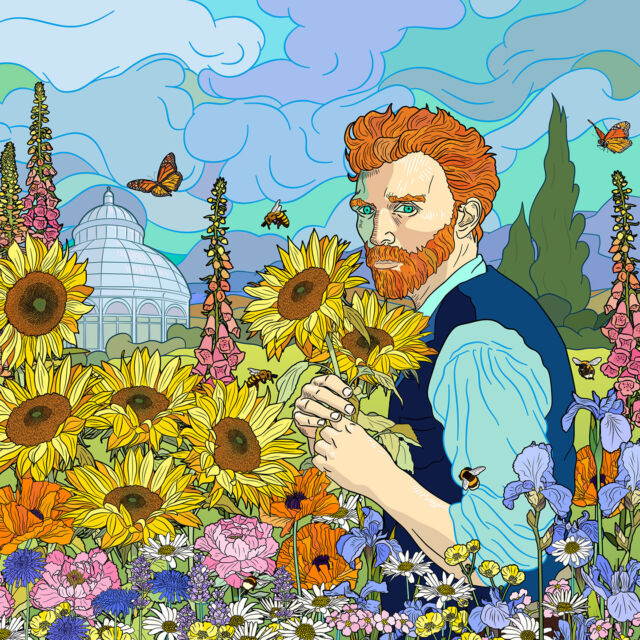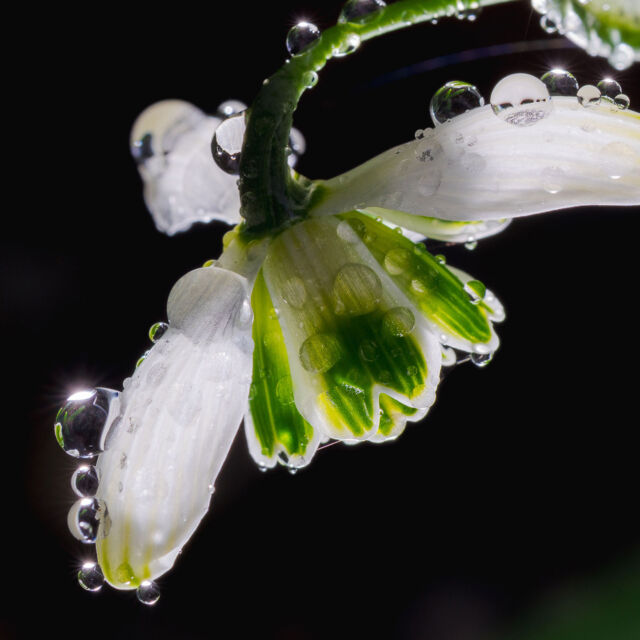NYBG Scientists Working at the Nexus of Food Security, Plant Biodiversity, and the Climate Crisis
Alex McAlvay, Ph.D., is an Assistant Curator in the Institute of Economic Botany at The New York Botanical Garden.

Banana (Musa), one of the globally important crops threatened by a reliance on monocultures
As the world grapples with unprecedented challenges from climate change and food insecurity, recent reports by the Intergovernmental Panel on Climate Change (IPCC) give a stark warning. Climate change has already led to decreased crop yields, particularly in low-latitude regions where the livelihoods of vast populations hinge on agriculture[1].
In this era of escalating risks, NYBG’s International Plant Science Center is working to combat the complex challenges posed by climate change to our food systems. You may be asking yourself why a botanical garden focused on understanding and preserving biodiversity might be so focused on food. It turns out that the diversity of plants—both crops and wild—around the world has everything to do with the resilience of our food systems.
Plant diversity supports our food supply in myriad ways, from the diversity of plant species we eat (7,000) to the different crop varieties we grow (think of all the types of heirloom tomatoes). Globally, our reliance on just a few crop species and varieties has grown rapidly in the last several hundred years. Now, out of the roughly 7,000 food species, 66 percent of global consumption is accounted for by only nine plants[2]. An equally radical shift has occurred in the number of crop varieties we consume. This narrow base of diversity puts us in a precarious position, as diverse crop plants and varieties possess key traits for resilience to drought, flooding, and other threats we face at increasing frequency.
Wild plant biodiversity can also help us stay nourished in an uncertain world. Wild plants have been a key food source for many cultures around the world, in some cases providing backup sources of food when crops fail. Lessons can also be learned from the DNA of wild plants. Our crops were bred by ancient farmers from their wild ancestors, just like humans bred dogs from wolves. These crop “wild relatives” typically have much greater levels of potentially useful diversity than their inbred crop cousins. Additionally, by studying the DNA of wild plants from extreme climates, we can better understand what underlies their resilience to drought and other challenges, knowledge we can translate into making our crops hardier.
NYBG scientists work at all of these (and more) intersections between plant diversity, food security, and climate change.
In many cases, local and Indigenous cultures have developed ways of using plant biodiversity to grow resilient crops or stay fed through disasters. I lead The Traditional Grain Mixture Project, an initiative focused on the ancient practice of mixing grain crops together in the field. Working in Ethiopia, Lebanon, Morocco, the UK, and Georgia, this project combines agricultural experiments, nutritional analyses, and interviews with farmers. Our research shows that the mixtures typically include species and varieties that vary in their resistance to drought, waterlogging, and different pests, ensuring a yield in a range of environments. To learn more about the project, see this Plant Talk post.
In another part of the world, NYBG’s long-term program Plants and People of Vanuatu works with local communities to preserve the diversity of plants found in that nation’s 83 islands in the southwestern Pacific. Due to climate change, the people of the Pacific region face threats from extreme weather such as cyclones and droughts that can quickly destroy the cultivated gardens that produce the majority of the food that they eat. One group of native wild foods is locally known as “famine foods” or “disaster foods” and have been used for as long as people can remember, especially when their gardens failed to produce or were destroyed. To preserve and promote this knowledge, the Botanical Garden’s Michael Balick, Ph.D., Vice President for Botanical Science and Director and Senior Philecology Curator of the Institute of Economic Botany; Gregory Plunkett, Ph.D., Director and Curator of the Cullman Program for Molecular Systematics; and their collaborators have put together a manual including important plant species that can be used in difficult times.
One of the most globally biodiverse countries, Colombia, is also the target of work by NYBG scientists. Mauricio Diazgranados, Ph.D., Chief Science Officer and Dean of the International Plant Science Center, has worked to comprehensively document useful plant diversity of the country, including an enormous range of edible plants. This work contributes to crop and dietary diversification, which in turn builds resilience to disruption from climate change. His projects have also built connections across supply chains in Columbia, adding diversity to livelihoods in rural areas, which can also buffer community impacts of crop failure.
Insights from the genetics of wild plants are also under investigation at the Garden to help climate-proof our crops. Barbara Ambrose, Ph.D., Director of Laboratory Research and Curator in Genomics, and Senior Curator Emeritus Dennis Stevenson, Ph.D., who are the leaders of the NYBG plant genomics program, are studying wild plants that tolerate drought conditions and poor soil fertility to identify genetic variants associated with resilience—work that will help breed tougher crops. Postdoctoral Researcher Makenzie Mabry, Ph.D., and I are also looking at wild plant genetics, in this case the wild and weedy relatives of some of our most important vegetables and oil crops—broccoli, cauliflower, kale, canola, cabbage, and others—to see if any of the sturdiness of their wild cousins can help us grow these nutritious foods into the future.
Elsewhere in the Garden, horticulturists work daily to share the beneficial knowledge of food diversity with our community, taking it out of the lab and putting it into practice locally. Bronx Green-Up, our community outreach arm that for decades has provided gardening support and education to Bronx neighbors and their urban farms, introduces useful techniques and a wide variety of healthful crops to promote sustainability even in small plots. And in the Edible Academy, thousands of students and families annually get hands-on experience with food plants, learning the benefits of climate-conscious gardening for their own needs.
Finally, NYBG’s scientists are also focused on how plant biodiversity can actually help tame the climate crisis—through a process called “natural carbon capture.” As they grow, plants incorporate carbon from the surrounding air into their tissues, locking it up and helping keep it out of the atmosphere, where it would otherwise exacerbate global climate change. This natural carbon capture intersects with food in a variety of ways, including the practice of agroforestry—the ancient practice of incorporating trees into agriculture. Associate Curator Brad Oberle, Ph.D., has shown that even very small urban agroforests can capture a surprising amount of carbon dioxide while simultaneously providing food and wildlife habitat.
Plant biodiversity plays a crucial but often underappreciated role in food security, particularly in the context of the climate crisis. Global agriculture has steadily moved toward uniformity, but the rich diversity of plants—both cultivated and wild—holds keys to resilience. Some of these lessons are being revitalized by cultures that have known them for millennia but have declined due to colonialism and globalization, while other insights are emerging with the integration of genomic technologies and wild plant diversity. Work to help safeguard our global food systems in the face of unprecedented environmental challenges is fully aligned with preserving the rich tapestry of global plant life.
[1]IPCC. 2021. Climate Change 2021: The Physical Science Basis Working Group I Contribution to the Sixth Assessment Report of the Intergovernmental Panel on Climate Change, 6th ed.; Cambridge University Press: Cambridge, UK; New York, NY, USA.
[2]FAO. 2019. The State of the World’s Biodiversity for Food and Agriculture. J. Bélanger & D. Pilling (eds.). Rome.
SUBSCRIBE
Enter your email address to subscribe to this blog and receive updates on new posts.











